Some of my fondest memories from my childhood in Hyderabad are of elaborate weekly lunches with my father. In India, many schools and offices are open for a “half-day” on Saturdays. My father’s office was across the street from my school and over the years we established our own little tradition: when I was finished with classes, he would pick me up, and we would go out to lunch together. We almost always went to the Nizam Club, a private member’s club established in 1884, that is known for their Hyderabadi food (you can read more about the club’s history here). The club employed some of the best chefs in the city at the time, and the food they served was perhaps the most complex, flavourful, and delicious food that I have ever eaten.
I did not know it then, but I think these long lunches, spent savouring food that had been cooked with painstaking attention to detail, some of it over the better part of the night before, had quite an impact on my life. They sparked in me an interest in gastronomy and its intersections with history, culture, tradition, and transformation. Interest turned to fascination, which in turn brought me to the study of wine, similarly complex, steeped in tradition, and ultimately, a labour of love.
Food is often the first point of contact and exchange between peoples, acting like a dynamic, living membrane, simultaneously absorbing from and influencing the multiple cultures and communities it encounters. Nothing exemplifies the osmotic character of food culture better than Hyderabadi cuisine. Situated in south India, Hyderabad is the capital of the state of Telangana. Its cuisine is a seamless, utterly beguiling blend of Mughlai food (itself a blend of North Indian, Turkish, Persian, and Arabic food culture) and gastronomical influences from Telangana, and other parts of south India. It has also absorbed elements from countless other sources, since Hyderabad is and has always been a metropole, receiving immigrants from all over India and the world.
This rich history means that Hyderabadi cuisine is so diverse and complex that one could not possibly discuss wine pairings for its many expressions and variations in a single article. Instead, I shall focus on five iconic examples of this cuisine.
The Food
Paneer 65: Traditionally made with chicken, this is a tangy, spicy appetizer topped with fried curry leaves.
Khatti dal: This lentil preparation is made with tamarind and flavoured with cumin, mustard, and coriander seeds, dried red chillies, and curry leaves (amongst other spices).
Bhagara Baingan: Tamarind and peanuts play a big role in this eggplant curry, infused with a litany of spices including curry leaves and chillis.
Mirchi ka Saalan: Traditionally served with biryani, this tamarind-based preparation is one of the most famous of Hyderabadi foods. Notably tart and heavily spiced, it adds extra heat and a bit of tanginess to biryani.
Vegetarian Biryani – Biryani is the most well-known and arguably the most exquisite expression of Hyderabadi cuisine. It is a rice-based preparation, slow-cooked for hours with spices and, traditionally, meat.
In talking about Hyderabadi biryani in this piece, I must provide two caveats. First, to some people, vegetarian biryani is not biryani at all. Before I turned vegetarian, I too was a biryani zealot, to whom biryani without mutton (in India, this means goat meat) was a contradiction in terms. That said, vegetarian biryani does have a similar flavour profile to its mutton counterpart. The big difference between the two is that, in vegetarian biryani, the gamey flavours of goat are replaced by vegetal flavours. Vegetarian biryani is also leaner because it lacks the fat from goat meat with which mutton biryani is practically saturated. My second clarification is that there are over 40 different types of biryanis in Hyderabad! For this piece, I focus on Hyderabadi Dum biryani as it is relatively easy to find in Ontario.
In my view, pairing different styles of wine with this sampling of Hyderabad’s breathtakingly diverse and opulent cuisine is a great way to begin exploring both the food and its interactions with wine. These foods are intensely tangy, using tamarind rather than tomato as a souring agent (most North Indian recipes, for example, butter chicken and paneer butter masala, use tomatoes). They also tend to have more heat-generating spices than their North Indian counterparts. Finally, curry leaves and mustard seeds are important components of Hyderabadi cuisine, while they are used much less often in North Indian food (mustard seeds are also commonly used in Bengali cuisine).
Wine Pairings
In my experiments with vegetarian Hyderabadi food and wine I found that big, more structured red wines like Cabernet Franc, Cabernet Sauvignon, and Malbec feel thin, astringent, and hot on the palate when paired with these foods. On the other hand, lighter, more elegant reds like Pinot Noir and Gamay hold up better structurally, but the intensity of the food flavours can make these wines appear muted and diluted.
In general, white wines are a more reliable choice when it comes this cuisine. In broad terms, high acid, concentrated, fruit-focussed whites, with lower levels of alcohol complement the savoury profile of these foods, refreshing the palate and contributing flavours of tart citrus, orchard, and even tropical fruit to the meal.
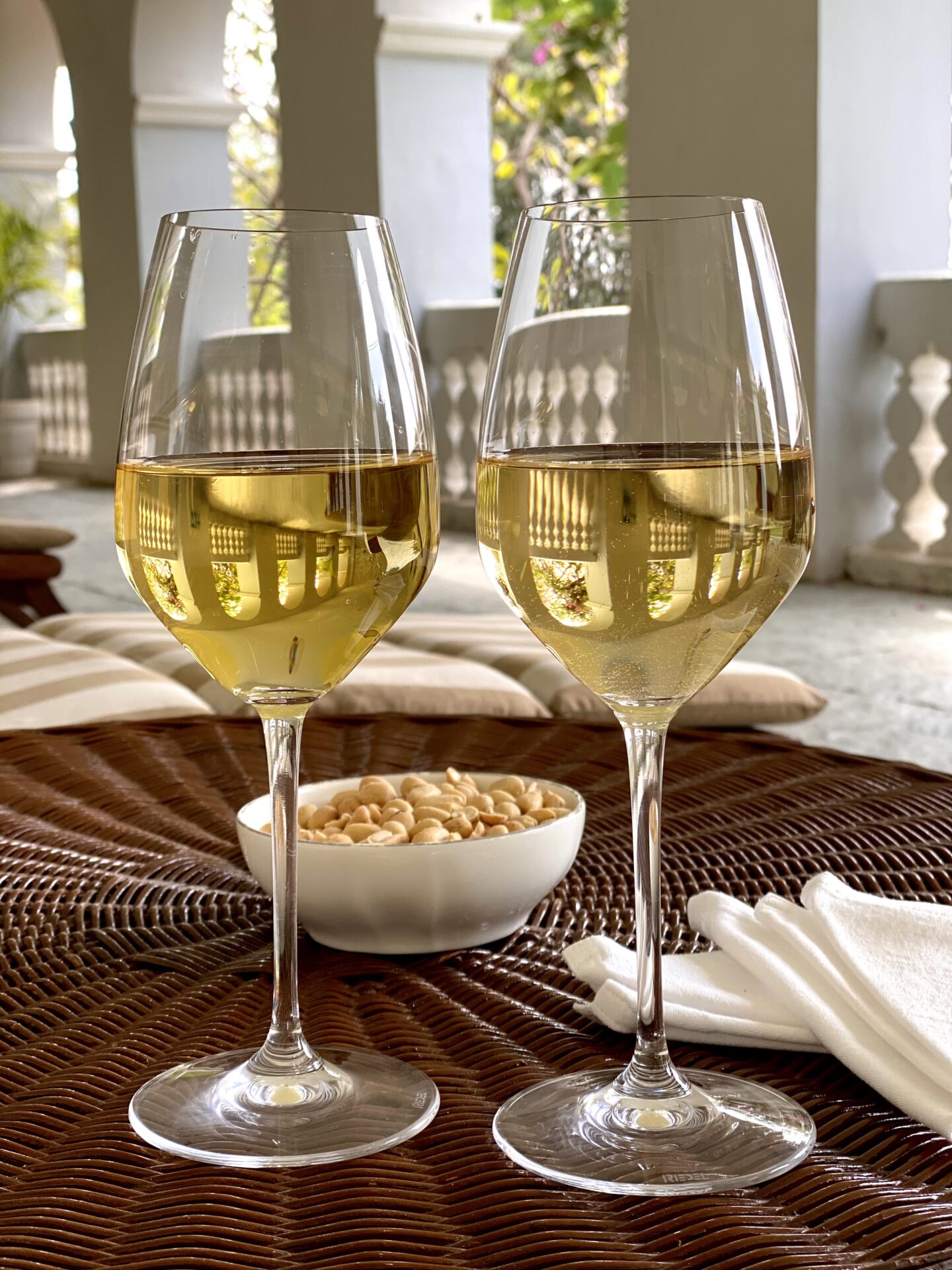
Sauvignon Blanc was the best pairing I came across during my taste tests. While slightly more restrained versions of the variety like Sancerre work reasonably well with Hyderabadi foods, riper expressions, with effusive flavours, like those from Marlborough are a better choice. Varieties like Torrontès and Chenin Blanc pair well with some of this cuisine too. Floral and fruity, with bright, fresh acidity, they hold their own when juxtaposed with concentrated, flavourful foods like biryani and mirchi ka saalan. Grüner Veltliner is also a great choice. Its intense citrus flavours of grapefruits, lemons, and limes, and herbaceous/vegetal notes complement the flavour profile of vegetarian biryani served with mirchi ka saalan, and tangy appetizers like paneer 65. The one caveat is that Torrontès, Chenin Blanc, and Grüner Veltliner tend to have a characteristically bitter finish. I find this bitterness goes with the food, but it may not appeal to everyone.
What can be especially interesting is trying lesser-known varieties that are similarly vibrant, fruit-forward, and expressive. For instance, under-appreciated, gastronomically versatile Pecorino, from the Marche and Abruzzo regions on Italy’s east coast, complements all the examples of Hyderabadi cuisine I have discussed here. Its zesty acidity, mineral notes, and bright citrus flavours are a wonderful juxtaposition to the spicy, salty, and rich flavours of the food.
Finally, white sparkling wine made in the traditional method makes for an interesting pairing with these foods. It acts as a palate cleanser, like a foamy wave washing over one’s senses, revitalizing the mind. While the wine itself is not memorable, in my view, when served with such intensely flavoured food, it helps highlight the intricacies of the cuisine, allowing one to appreciate new facets of each preparation or re-experience old ones. I recommend trying a reasonably-priced Crémant, perhaps one from Limoux or the Loire Valley.
By far the most difficult Hyderabadi food to pair wine with was baghara baingan. It made almost all the wines taste lean and bitter, muting their fruit flavours. A traditional method sparkling wine works better than most with it, as also a ripe, fleshy, Sauvignon Blanc with some residual sugar.
Dessert
Qubaani ka meetha and double ka meetha are two iconic Hyderabadi desserts. The first is an apricot pudding, pictured below (read more about it here).
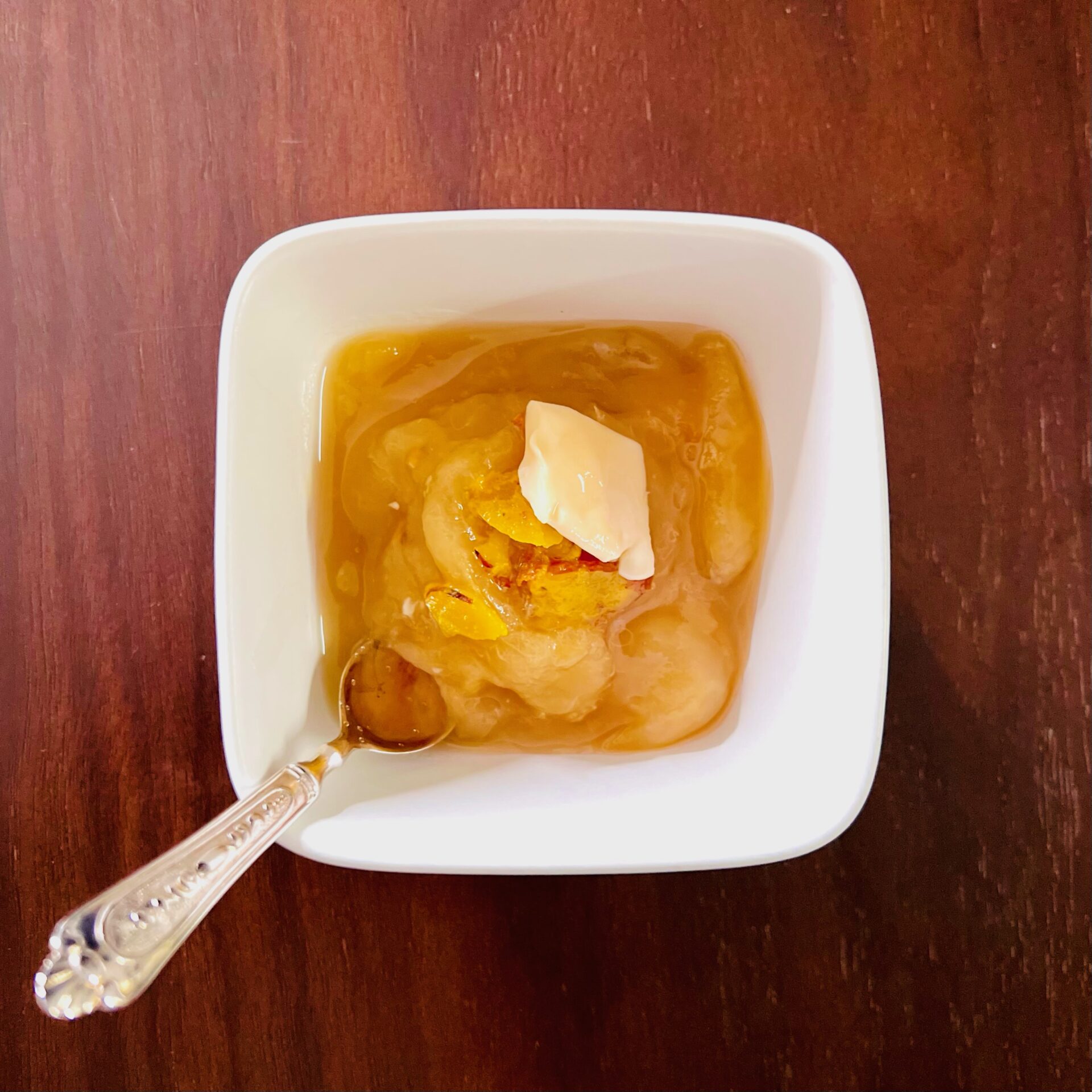
Meanwhile, double ka meetha is a Hyderabadi variation of Shahi Tukra (which literally translates to royal pieces), a popular Mughlai dessert of bread slices dipped in hot milk and infused with saffron, cardamom, and cloves.
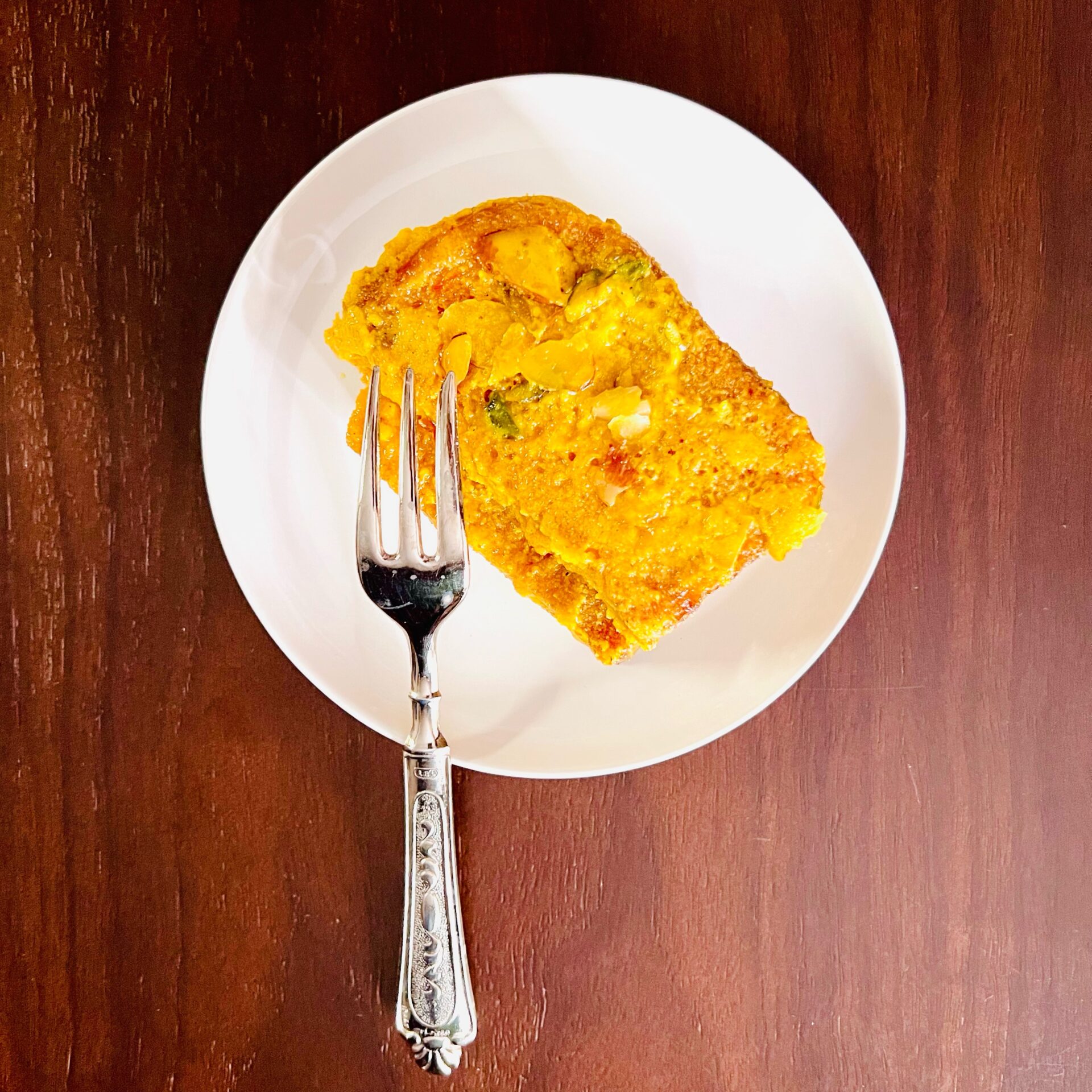
A chilled glass of Hungarian Tokaji Aszú pairs wonderfully with both desserts, its bright acidity cutting through their sweetness and syrupy texture. The apricot notes in the pudding amplify those in the wine, while the saffron notes in the wine mirror those in the double ka meetha. Moreover, the bitter, orange marmalade-like notes in the Tokaji provide a refreshing contrast to the sweetness of the desserts. For a more luscious pairing, you could try both desserts with an ice wine.
A Final Note
If you are wondering where to get Hyderabadi food, Charminar, and Hyderabad Palace, both in Scarborough, serve the most authentic examples of this cuisine that I have come across in Toronto. If you are feeling adventurous and want to try cooking some of these foods, I recommend Hyderabadi Cuisine: A Princely Legacy, a book by Pratibha Karan that contains a large number of detailed and authentic recipes.
Whether you decide to order take out or cook, I wish you happy experiments with wine and Hyderabadi food! Here is hoping they give you as much joy as they have given me.

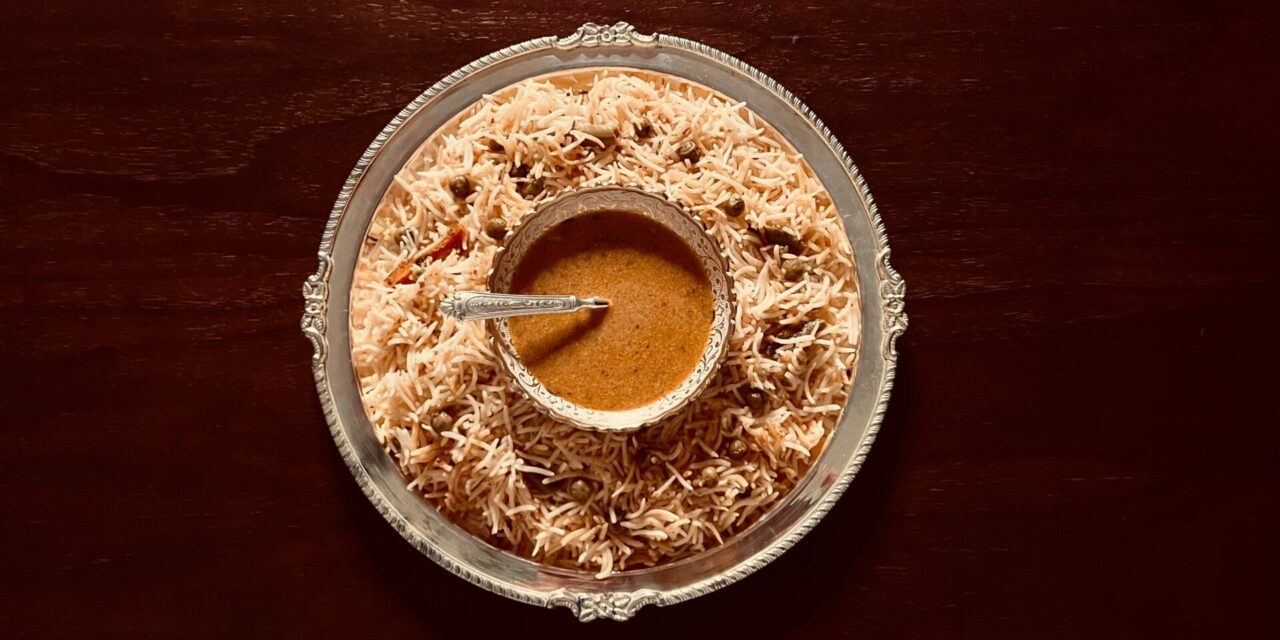

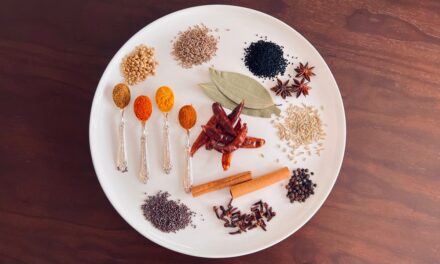
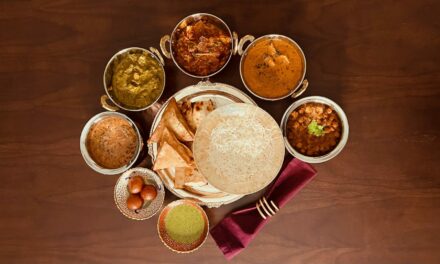
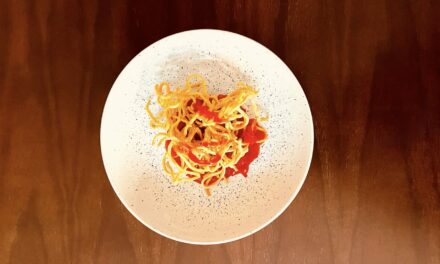
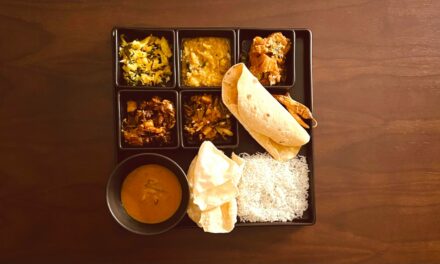

Hi, Megha! Thanks for this wonderful article and memoir (ha!) — I love that story of you and your dad lunching. You’ve given us some great tips, well-articulated and fun to read. I’m just now drinking a lovely Falanghina (it’s Friday afternoon, so what?), and pondering how it might match this cuisine. I imagine it would work well. This is the Masseria Altemura, at LCBO now. With that, I’m off to Scarborough!
You are too kind, Dick! Visit Hyderabad and you can join us for lunch sometime too! If you do try the Falanghina with Hyderabadi food, please let me know how it goes!